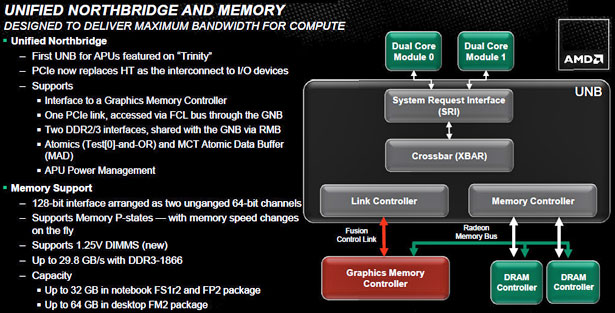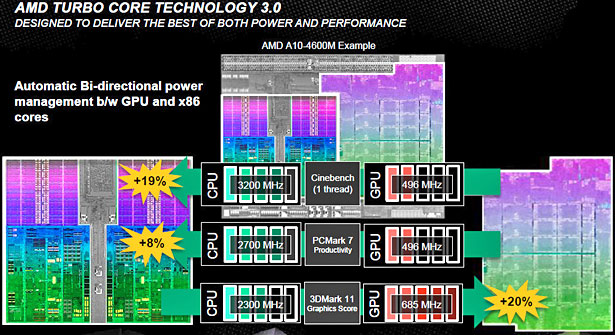AMD Trinity A10-4600M Processor Review
Turbo Core 3.0, UNB and Memory Controller
Trinity also incorporates an updated DDR3 memory controller that now supports new low power 1.25V DDR3 memory, incorporated with in a new UNB or Unified Northbridge design.



It's interesting to note that PCI Express now replaces HyperTransport for serial connectivity to downstream I/O devices in Trinity and it makes sense, given the obvious mass adoption of PCIe serial interfaces across platform and chip-level interconnects. The Radeon Memory Bus or RMB offers a full bandwidth path for the GPU engine to system memory that bypasses cache coherency mechanisms for lower latency access.

Finally, AMD's Turbo Core 3.0 technology offers more aggressive clock gating and over-clocking, with up to a 20% increase in top-end GPU clock speed, 19% in single core CPU clock speed and an 8% boost in multithreaded CPU performance. Specifically, the A10-4600M that we'll be running through its paces next, scales up to 3.2GHz in single-threaded applications on the CPU, but has a base clock of 2.3GHz with dynamic scaling as needed in multithreaded workloads. The GPU scales from a base of 496MHz to 685MHz under heavy 3D rendering requirements.






